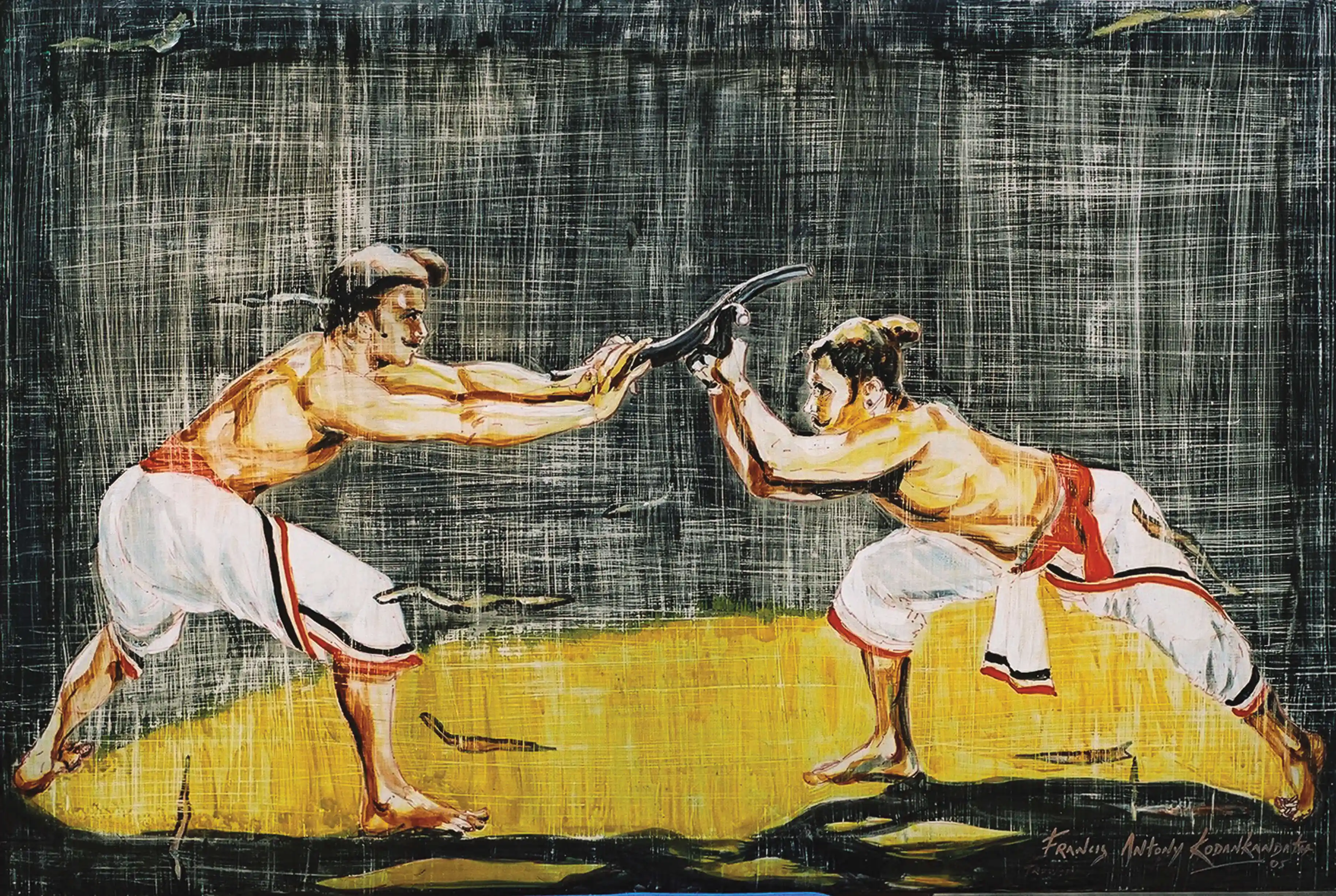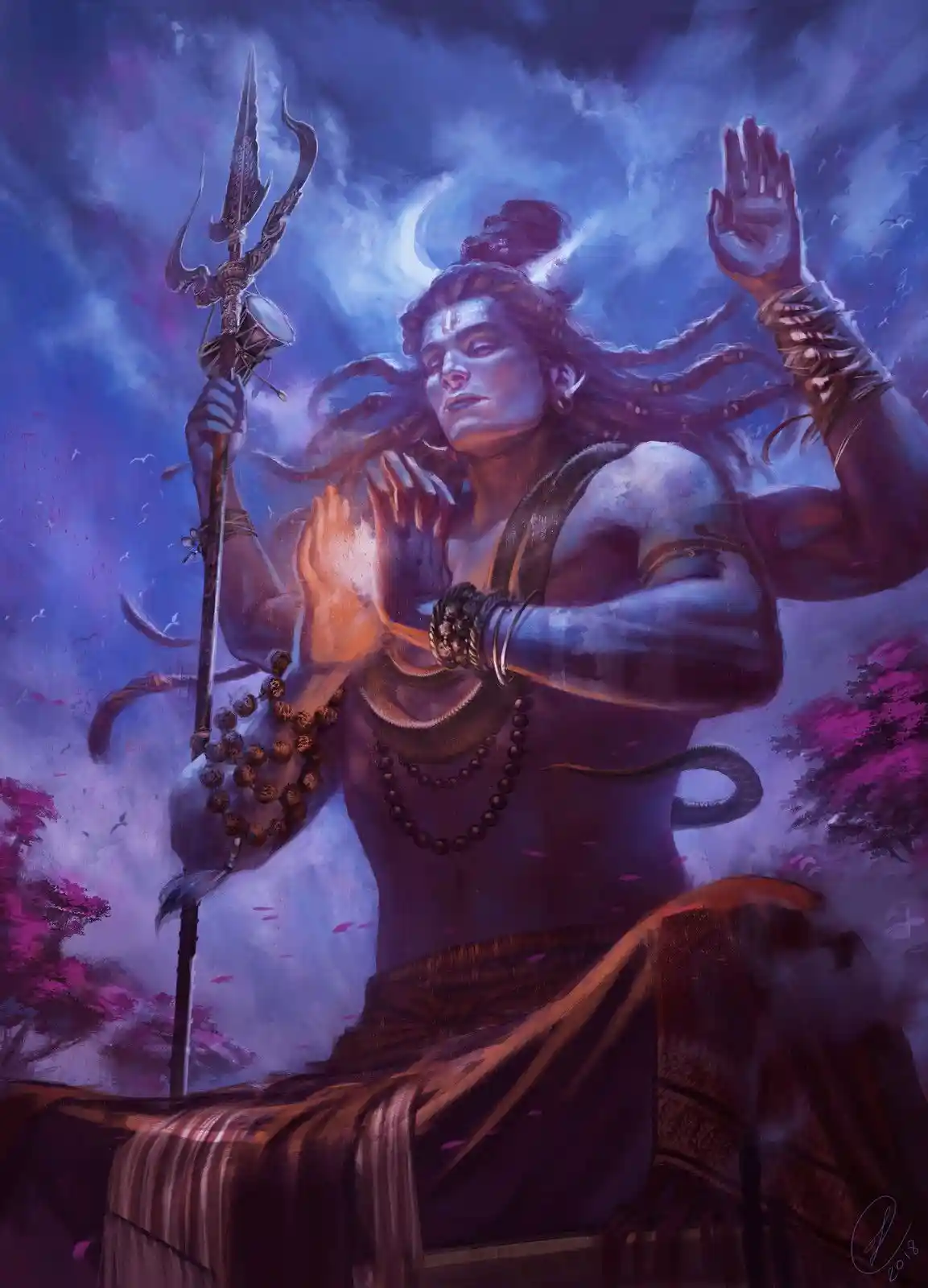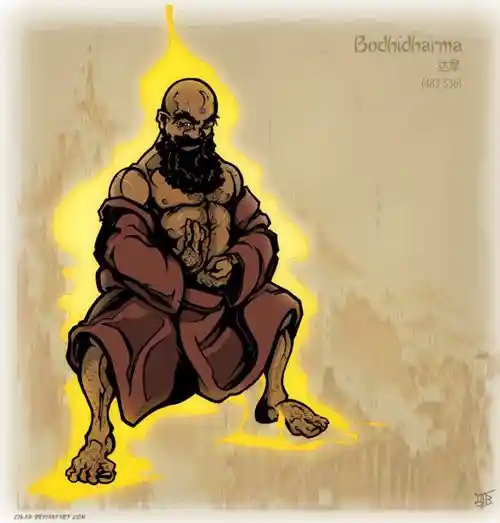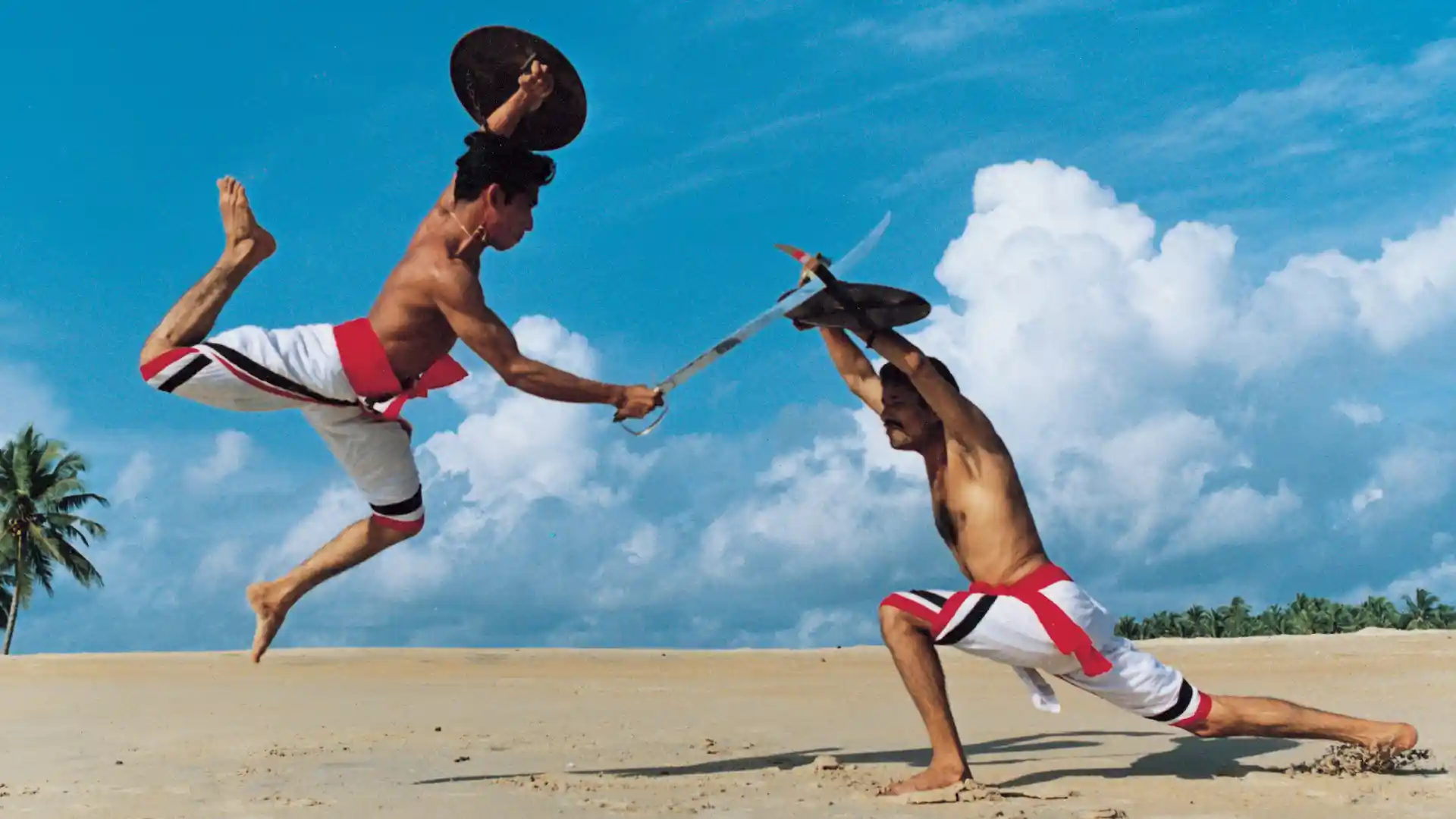Kalaripayattu: Mother Of All Myths / Mother Of All Martial Arts (Games and Sports originated in India)
From a centuries-old legacy, comes a martial art form that defines the true strength of India. Kalaripayattu- a martial art form with a rich and colorful legacy, was born in God’s own country. But how did it travel to faraway countries to enlighten people with secrets that were well-hidden for centuries?

Kalaripayattu Art: The Mother Of All Martial Arts
Wars and battlefields have been an integral part of mankind since the very start of civilization. From hand-to-hand combat to wars with nuclear weapons, the art of war has undergone tremendous change over the centuries. However, there are certain techniques or tricks that might allow a fighter to take over the other fighter- crack the neck and the person would stop breathing. Sounds like a South Indian movie scene, isn’t it?
Well, most of the ancient art forms are born in God’s own country, and the art that we would be exploring too comes from Bharatavarsha. Considered to be the mother of all martial forms, Kalaripayattu’s tale belongs to a bygone era of 15,000 BCE.
The mention of the word Kalaripayattu was first found in Sangam Literature. A combination of two Malayalam words- Kalari meaning battleground and Payattu meaning training of martial arts, Kalaripayattu can be translated into practice of martial arts in the battlefield. It is said that Kalaripayattu’s existence can be traced back to 3000 years and this was proved by the mention of martial arts in the Vedas. It is believed that Lord Shiva was the one to have invented this art form. He further spread this art form through his disciples. Lord Nandi was considered to be Shiva’s first disciple of this art of warfare as both of them are always together.
Shiva’s next disciple was his son Lord Kartikeya. When the demon Tarkasura tortured the human beings and gods, Kartikeya was born to destroy him. Tarkasura had got a boon that he could only be killed by Lord Shiva’s son. Karthikeya learned the art of Kalaripayattu from both Shiva and Nandi. While Karthikeya was sent to south India, Ganesha was sent to north India to fulfilling their duties. This is the reason why Karthikeya is worshipped as Lord Murugan in South India, and Lord Ganesha is worshipped in northern India.
The third disciple of Lord Shiva was Sage Agastya. After learning Kalaripayattu from Karthikeya and Shiva, he traveled to southern India. In Kerala, this art form is known by the name of Thekkan Kalari, while in Tamil Nadu, it is known as Silambam. Agastya gave the knowledge of 108 Marmas to the world which is considered to be an important part of Kalaripayattu. It is said that one who has the knowledge of these Marmas can easily injure or heal someone.
The fourth and last disciple of Shiva was Parashurama. It is said that he was the one who taught the art of Kalaripayattu to the original settlers of Kerala, shortly after bringing Kerala up from the ocean. When the Kshatriyas become enraged by their desire for dominance and spread a great deal of evil, Sage Parshurama steps in. Sage Parshurama's father was even assassinated by one of the Kshatriya kings. Sage Parshuram's mother wept and pounded her chest 21 times after her husband was murdered. Seeing the sorrowful sage, Parshurama determined to murder the whole Kshatriya clan 21 times by himself in order to suppress evil in the world. It is thought that Sage Parshurama is indestructible and is now alive in this Kaliyuga and that he will appear to Lord Kalki to teach him the art of combat at the end of the Kaliyuga.
Sage Parshurama's martial arts technique is known as Vaddakan Kalari, and it is primarily centered on a brutal weapons system. This art thrived in the northern parts of Kerala. A Malayalam song relates to Parashurama's founding of Kerala and credits him with establishing the first 108 kalaris around Kerala, as well as instructing the very first 21 Kalaripayattu masters in Kerala on enemy destruction.
The oldest known evidence of Kalaripayattu is in the form of palm leaf texts with fighter drawings discovered in Kerala about 200BCE, although it is conceivable that it is several hundred years older. According to the Dhanurveda, historic Indian literature on Military Science, Kalaripayattu is among the 64 forms of art mentioned in Indian mythology. One of the Vedas, or historic Indian legal and cultural teachings, is the Dhanurveda. The Vedas were passed down through the generations and are considered to have originated about 1500 BCE before being put to writing much later.
This gets us to Bodhidharma's narrative. Bodhidharma (known as Dhamo in China and Japan) is a pivotal character in the history of Kalaripayattu and is credited with initiating the discipline of extreme physical training at China's renowned Shaolin monasteries. The exercises he taught the monks are regarded as the earliest steps in the formation of Kung-Fu.
Bodhidharma was born as a prince in Kanjipuram, Tamil Nadu, as the third son of the reigning king, Pallava. Bodhidharma learned the teachings of Buddhism as a kid and was taught in the Kerala form of Kalaripayattu. His siblings plotted against him and usurped his reign. This prince subsequently abdicated his throne to become a Buddhist monk known as Bodhidharma. For several years, he lived with his guru, who told him to move north and share the teachings of Buddhism. When his master died, Bodhidharma duly started out on his journey, trekking all the way up to China.
Bodhidharma left India in AD 522 and proceeded north into China, wherein he found a new home in the newly created Shaolin monastery. He published two books while there about strengthening the muscles for flexibility and efficiency. He devised a stringent physical and psychological training regimen based on these two works, which he started teaching to Shaolin monks. The exercises he designed and perfected – which have been most probably based on Kalaripayattu techniques – were the very origins of what became Shaolin Kung Fu.
Kung Fu was not the only Eastern art form that is said to have originated from Kalaripayattu. Karate features moves and principles that are comparable to those of judo. Even the term Karate is associated with Kalaripayattu. Karate means 'empty hand' in Japanese. Verumkai, which also means 'empty hand,' is the third step of Kalaripayattu training.
Bodhidharma founded the Dhyan School of Buddhism, afterward known as Chan in China...and Zen in Japan! In China, Bodhidharma is known as Damo, and in Japan, Daruma. In fact, the renowned Japanese papier-mache Daruma doll (a good luck symbol) is modeled on Bodhidharma, with its wavy beard and wide eyes. Every New Year, Japanese folks destroy their old dolls and replace them with new ones. Every March, a prominent temple in Japan hosts a Daruma festival attended by roughly half a million!
For generations, Kalaripayattu practitioners taught in bunkers without the benefit of a textbook. The textbook was the gurukkal, or teacher, from whom pupils studied. The two components of kalari—vaythari, or vocal orders, and meythari, the physical action regulated by the former—were available to all pupils, but only a select few had access to the guru's distilled wisdom acquired over the years. To some extent, the oral tradition is still alive and well in Kalaripayattu today. The curious sit with the guru at the closing of the evening practice to clarify their doubts and conduct disputes.
When it comes to the construction of the Kalarippayattu, was conducted inside a Kalari, which is a specifically built site where the dirt is scooped out for approximately 3 to 4 feet deep and creates smooth ground. The Kalari combatants would seek blessings from a god known as 'puttara', who will be located in one of the corners. In another area, there is a space called 'guruttara,' which is devoted to the kalarippayattu preceptors. The kalarippayattu sword, a hybrid of a sword and a shield used for assault and defense on a combat field, is the traditional weaponry of this martial art.
If you believe Kalaripayattu is the most lethal martial art, you are correct, because the techniques of this style were developed for combat and carnage. As a result, the learning process for Kalarippayattu requires rigorous training since the body must prepare for bending and shaping the muscles. Thus a complete body massage with coconut oil as well as other medicinal herbs is performed before beginning the practice of Kalarippayattu in Kerala.
The moves of kalarippayattu, Kerala, would appear virtually familiar if you pay close attention. That's because those motions were adapted from the environment of animal assaults. They also named some kalaripayattu positions after animals. 'Ashta Vadivu' refers to eight animal postures.
During the Kalarippayattu practice in Kerala, males wear a long cotton fabric across their hips called the 'kacha,' and the way of wearing is known as 'Kacha kettal.' The modern Kacha utilized in Kalari is 5 to 6 feet long and one foot wide. They are wrapped in a certain way that It provides maximum hip tightness and supportive protection to the naval area. Men occasionally wear something on their upper torso and stick to the 'kacha.' Women, on the other hand, sport a sleeveless cotton blouse over the 'kacha.’
The invading British East India Company declared the noble martial art practice illegal during a crucial (but also extremely dark) phase in its history. In the late 18th century, the Company, which had created massive commercial and military centers in Madras, Calcutta, and Bombay, was in the process of consolidating its grip on southern India by capturing the area of Malabar. They were greeted with tremendous opposition by the Malabar kingdoms of Travancore and Kottayam, whose armies were made up of thousands of savage soldiers trained in a highly efficient martial style called Kalaripayattu.
Because Kalaripayattu was so firmly interwoven in Kerala's culture and history, it was not only difficult to conquer, but also frustratingly impossible to inhabit. Even after the British invasion, resistance arose inside the Malabar kingdoms, frequently in the shape of bands of guerilla Kalaripayattu warriors who excelled in daring raids and disrupting ambushes. By far the most noteworthy opposition was led by Pazhassi Raja, King of the Kottayam kingdom. He is regarded as Kerala's first independence warrior and a Kalaripayattu hero. Unfortunately, it is believed that much knowledge and many methods were destroyed during this dark era, but without the valiant Gurukkals, the annals of Kalaripayattu might have come to an end two hundred years ago.
Kalaripayattu today has a global audience, and its renown and splendor have captivated hearts all over the world. Kalaripayattu, in a Phoenix-like resuscitation, is now blossoming in a new avatar – an old form of art – a motivator for identity in dance forms – both contemporary and traditional, in theatre, in fitness, and even in the cinema. There are around 1000 Kalaris that teach this art form.

Lord Shiva: The inventor of Kalaripayattu; Image Source: Pinterest

Sage Parashurama: The man who gave a new identity to Kalaripayattu; Image Source: Sacred Bharat- WordPress

Bodhidharma: The man who invented Shaolin Kung Fu; Image Source: MensXP

The Wonders of Kalaripayattu; Image Source: Kerala Tourism


